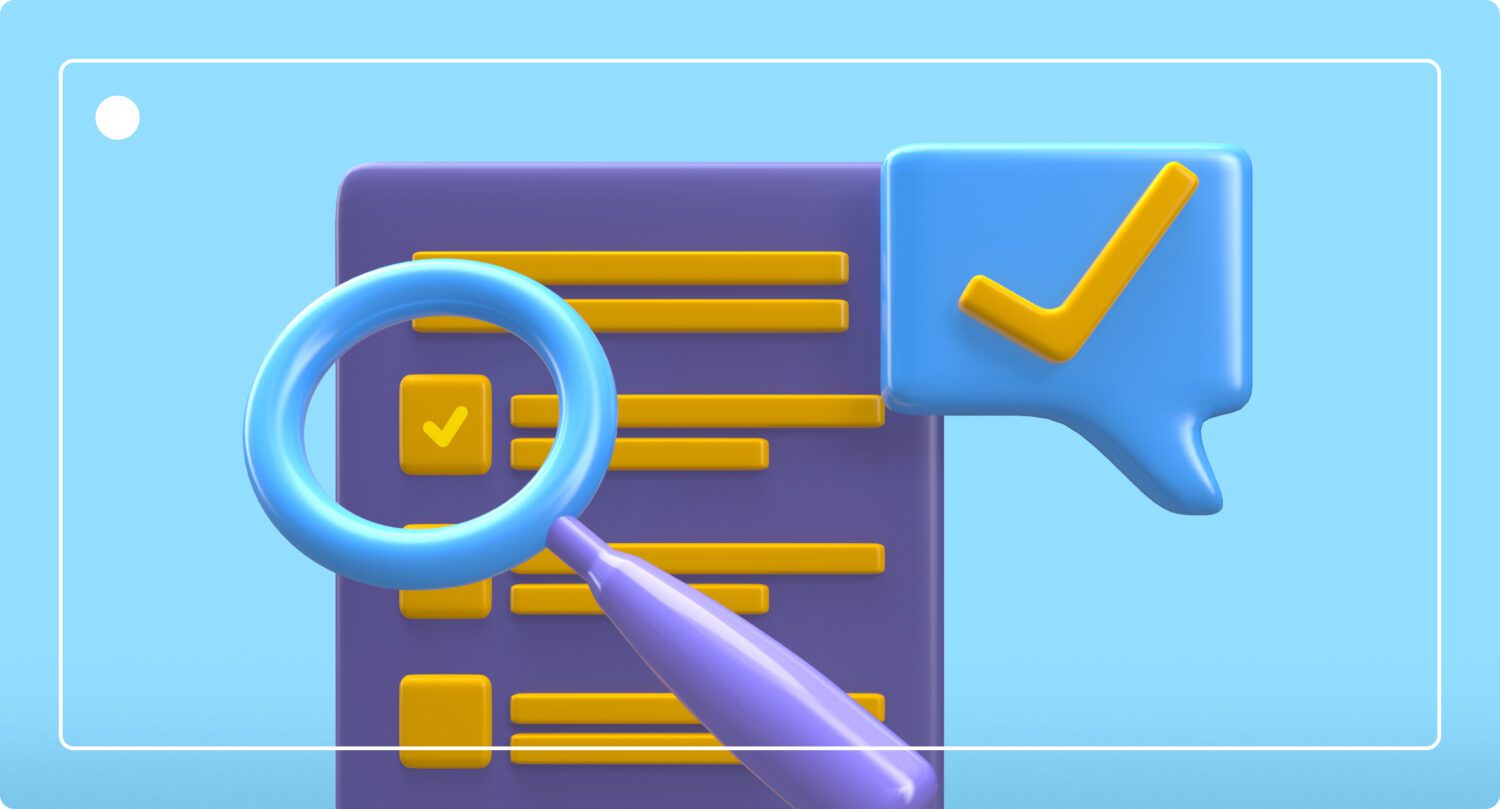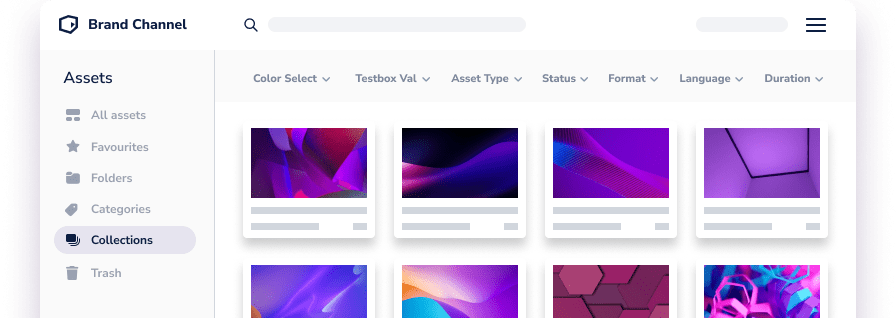How to Integrate Content Approval Software into DAM Workflows
Digital Asset Management
Updated on February 14, 2025
Over the past ten years, digital asset management software has become an increasingly important piece of IT infrastructure for businesses of all sizes.
A DAM acts as a single source of truth for your brand’s content. While DAM platforms were initially just fancy digital file storage systems, businesses have learned that there are several other reasons why digital asset management is an irreplaceable process.
With DemoUp Cliplister’s DAM, for instance, you can upload, store, organize, edit, and distribute content all from one single place.

But how do you know when a piece of content is ready for distribution? That’s where content approval software comes in.
Content approval software is a digital tool that facilitates the efficient review, validation, and authorization of content before it is published. By integrating a content approval system into your DAM workflows, you can publish assets faster and improve your time-to-market.
The rest of this post presents a step-by-step guide on how to create a seamless review and approval process inside your existing DAM system.

Want to learn more about DAM? Download our playbook
Free download nowStep 1: Evaluate Your Current Content Approval Workflows
Before you get started on implementing your solution, you should take some time to identify and understand your business’s biggest pain points and bottlenecks. This will vary by team and the role and responsibility of each user.
Therefore, we suggest sitting down with a representative of each team involved with DAM and content approval to understand their day-to-day struggles and what needs to be fixed.
Once you have a list of areas for improvement, prioritize them based on the impact a solution would have on your firm’s operations. The best way to do this is to analyze your existing tools and systems for content approval and their limitations.
The last part of step one is to consider the specific requirements and objectives of your current digital asset management workflows:
- Is there anything important to keep in mind?
- Where would (could) content approval make the biggest impact?
- Are there any barriers or constraints that you need to factor in?
By the end of this step, you should be able to answer these questions and have plenty of insights into your requirements.
Step 2: Identifying the Right Content Approval Software
When you evaluate content approval software, there are several key features that you should look for. These features are designed to streamline the content review process, ensure quality control, and improve collaboration among stakeholders.
Here are some important features to consider:
- Workflow management: Look for software that allows you to define and customize approval workflows based on your organization’s specific needs.
- Collaboration and communication tools: Your tool should allow users to leave feedback, suggest changes, and communicate in real-time, within the software, to reduce the need for back-and-forth email exchanges.
- Customizable approval criteria: Software that allows you to define and customize approval criteria based on content types, compliance regulations, brand guidelines, or any other specific requirements helps ensure content is properly reviewed.
- Audit trails and reporting: A content approval platform should provide comprehensive reporting capabilities to track the status of content, identify bottlenecks, measure approval times, and generate performance metrics.
- Integration capabilities: Integration with content management systems (CMS), project management tools, or marketing automation platforms can streamline workflows and improve efficiency.
- User-friendly interface: A well-designed interface reduces the learning curve and encourages adoption among team members.
- Security and permissions: Content approval often involves sensitive information. Ensure that the software provides robust security measures to protect your content from unauthorized access or data breaches. It should offer role-based access control, encryption, and compliance with relevant security standards.
- Mobile accessibility: In today’s mobile work environment, accessing and approving content on the go can be crucial. Look for software that provides mobile accessibility through responsive web design or dedicated mobile apps.
- Scalability and flexibility: Your platform should accommodate a growing number of users, content assets, and approval workflows. The software should be flexible enough to adapt to your evolving requirements.
Step 3: Assessing Integration Requirements
Before you begin with your integration, it’s important to understand how the requirements of your two systems intersect. This is a critical step to ensure seamless collaboration and efficient workflows. The integration requirements will ultimately determine the success of your implementation.
When integrating the two systems, it’s essential to consider challenges that may arise. Here are some of the common challenges most companies face when integrating the two systems. If you’ve done a DAM implementation before, many of the challenges are similar:
- Compatibility: You need to evaluate compatibility in terms of data formats, APIs, and integration capabilities between the content approval software and your existing DAM system.
- Data synchronization: Efficient workflows require seamless synchronization of metadata, approvals, and assets between systems for consistent and accurate data, approvals, and assets between the two systems.
- Security and permissions: Whichever content approval software you choose needs to align with your DAM system’s security protocols to protect sensitive assets and maintain access controls.
- User adoption: Introducing a new software system requires user adoption and training. Consider the learning curve and ease of use when selecting content approval software to achieve buy-in.
- Scalability: As your content library grows, make sure the combined system can handle increased volume without compromising efficiency.
Lastly, it’s important to note any potential compatibility issues between the two types of software. You should consult any documentation provided by the vendors for integration guidelines and requirements, conduct thorough testing, and engage with vendor support to address any potential concerns.
Step 4: Planning the Integration Process
After some careful planning, it’s time to integrate your content review system with your existing DAM. There are several ways to do this using APIs or automation tools. Whichever way you choose, follow these steps for a smooth and effective result:
- Define your goals: Clearly articulate your goals and objectives. Are you aiming to streamline content approval, enhance collaboration, or improve efficiency? Identify your goals up front, so you can align your efforts accordingly.
- Assess APIs: Ensure the APIs are compatible and capable of exchanging data with minimal effort. The best digital asset management software providers offer powerful APIs, so look for API documentation and developer resources for guidelines.
- Create a timeline: Develop a detailed timeline that outlines the project from start to finish. Identify key milestones, deadlines, and dependencies. This will help you stay organized and ensure structured and timely implementation.
- Assign responsibilities: Allocate specific responsibilities to team members involved in the integration. Assign roles for technical setup, data migration, system configuration, and user training. Clearly define who is responsible for each task to avoid confusion and ensure accountability.
- Customize to fit your workflow: Utilize the content approval software’s customization options. Tailor the system settings and workflows to align with your existing DAM processes. Customize user permissions, approval stages, and notifications to match your unique requirements.
- Test, test, and test some more: Before going live, conduct thorough testing to validate the integration. Test the upload and approval of sample assets, review data synchronization between systems, and ensure it functions as expected. This will help identify and address any issues or discrepancies.
- Train and educate: Provide comprehensive training to the users who will be involved in the DAM and content approval process. Offer hands-on sessions, documentation, and resources to familiarize them with the new processes and features.
Step 5: Configuring and Testing the Integration
After you connect the two systems, follow this procedure to test the combined integration and make sure everything functions correctly:
- Configuration Process: Test the configuration by setting up user roles, customizing your review and approval workflows, and adjusting settings like notifications and metadata fields.
- Integration Setup: Connect the content approval software with your digital asset management system using the provided integration options. Follow instructions for API setup, establishing secure connections, and mapping data fields between the systems.
- Data Synchronization: Ensure data synchronizes between the software and your digital asset management system. Upload sample assets to confirm they appear for review in the approval software, and validate that changes made to metadata or approval status are reflected in both systems.
- Functional Testing: Thoroughly test the integrated workflow by initiating approval processes, sending notifications, and tracking content progress. Verify that the software functions as expected, facilitating effective collaboration among stakeholders.
- Data Integrity Testing: Validate data integrity by checking the accuracy of synchronized metadata, tags, and asset information. Confirm that version control is maintained, and that the latest asset versions are available for review and approval.
- Troubleshooting Tips: If issues arise, review the API configurations, double-check your data mappings, and check for conflicting settings or permissions. Consult any documentation and support resources for troubleshooting guidance.
Step 6: Training and Onboarding Users
The last step in the process is acquainting your team with your new combined system to drive adoption.
You should focus on comprehensive training (which should also provide hands-on experience), while also building up a database of documentation so that users can refer to it as needed.
After initial training, it’s important to conduct regular check-ins with your departments to ensure that everything is running smoothly and to offer ongoing support.
Take your users’ feedback into account to optimize the system and make any necessary changes. Be sure to track and measure adoption and identify areas where additional training may be needed.
By prioritizing adoption, you will smooth out the transition to the new workflows. Your teams should now be able to effectively collaborate on and optimize the content management process, which ultimately drives the success of your organization.
How Filestage Can Help with Your Content Approval Needs
If you’re looking for a recommendation, we suggest using Filestage in conjunction with our digital asset management platform, as it offers a variety of helpful features and seamlessly integrates with the DemoUp Cliplister DAM system.

This easy-to-use, powerful software allows you to cut feedback and approval time by 30% across your organization.
Filestage is the content review platform that makes approvals clearer, faster, and more collaborative. 92% of files get signed off in just two review rounds.
To learn more about how to integrate Filestage with DemoUp Cliplister and how both software can work together, please schedule a meeting with one of our DAM consultants.
Wrapping Up
Integrating content approval software into your DAM workflows offers numerous benefits for your organization. By following the key steps outlined in this guide, you can transform your content management practices and achieve greater efficiency.
Through careful planning, configuration, testing, and training, you can streamline content creation and improve your content’s time-to-market. Strategic moves like this are important for productivity, improving collaboration, and enhancing the effectiveness of your DAM system.
Other Resources
For more information about digital asset management, product videos, and content creation, visit our blog.
To see our full product portfolio, see our homepage.
You can integrate your content approval software with your DAM system typically through the use of an application programming interface (API). While several DAM systems may natively integrate with certain software, it’s best to go the custom route so you can adapt your system to existing workflows.
We suggest using Filestage for your content approval software needs. You can combine Filestage with our DAM by using the powerful API integration capabilities each possess.
Content approval software contains many unique features that DAM systems may not cover. Combining them helps you manage projects more efficiently, cut down on the number of feedback loops, and bring content to market faster.
The people most likely to use content approval software are those on creative teams. This is why combining DAM software with review software is a no-brainer for many businesses.
If you have a lot of content or work with many large creative teams, you should invest in a content approval software / DAM system integration right away. It can help you achieve better ROI simply by bringing your content to market faster among many other benefits.
Better Content. More Sales.

Fill out the form to discover our end-to-end eCommerce content solutions for brands & shops




